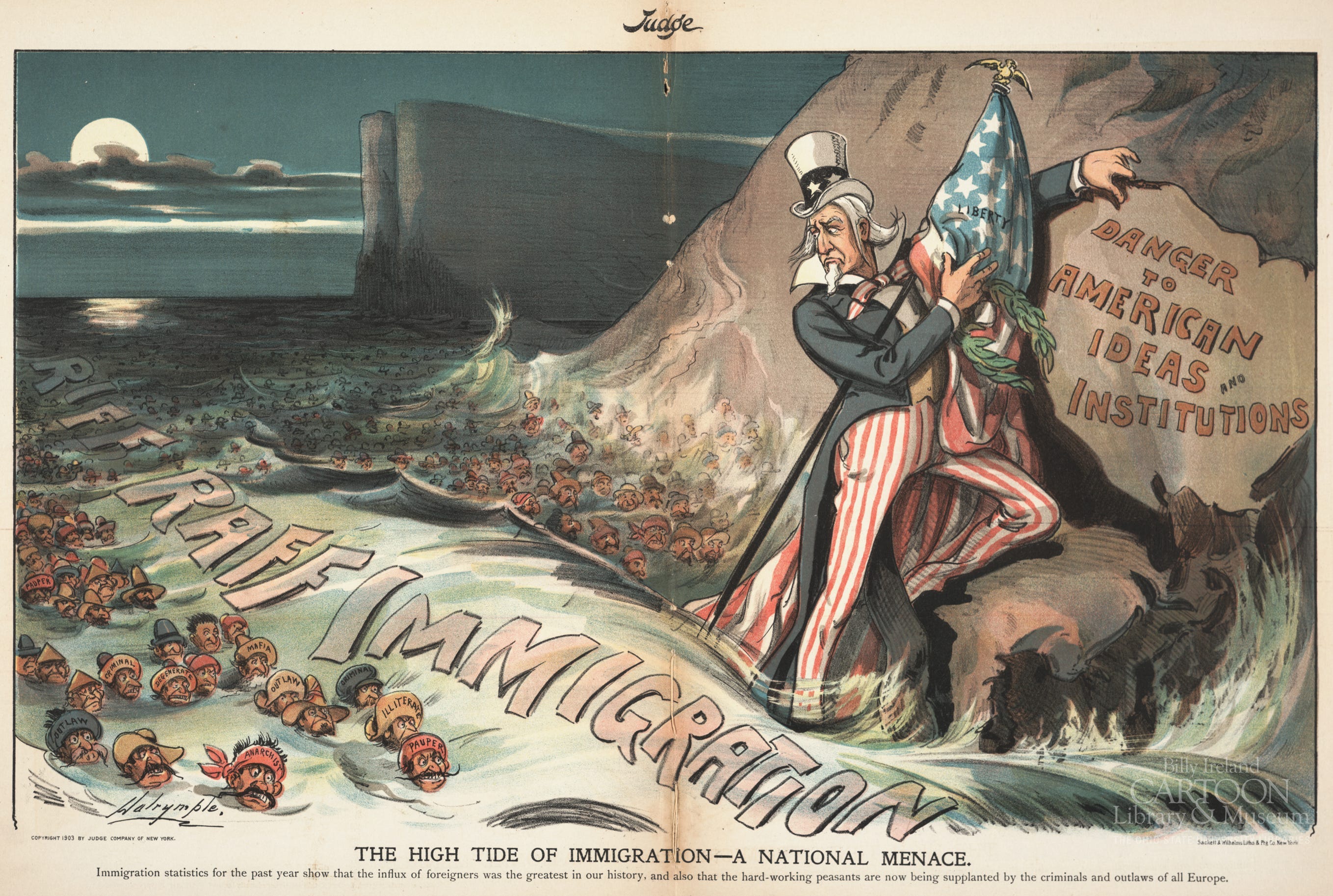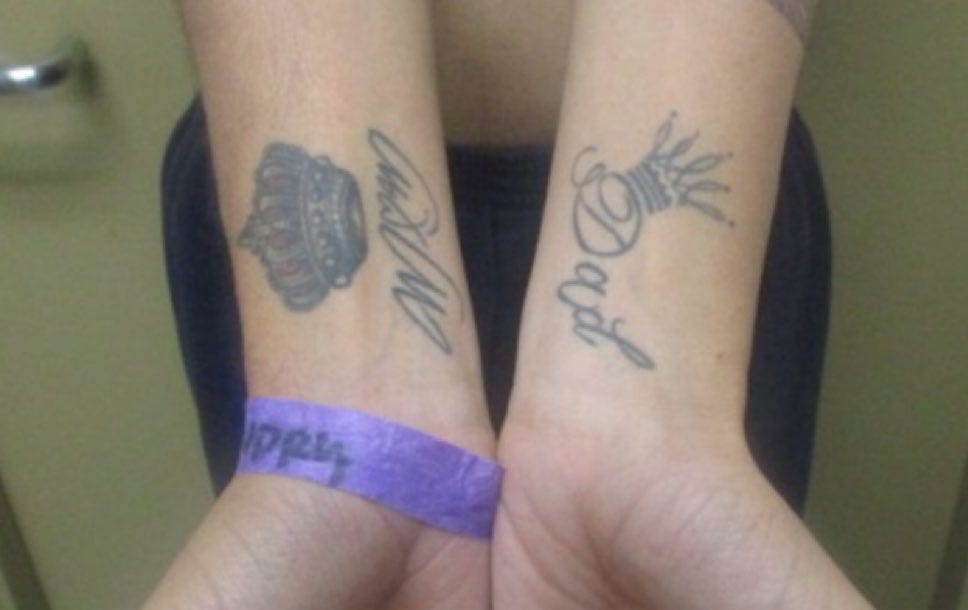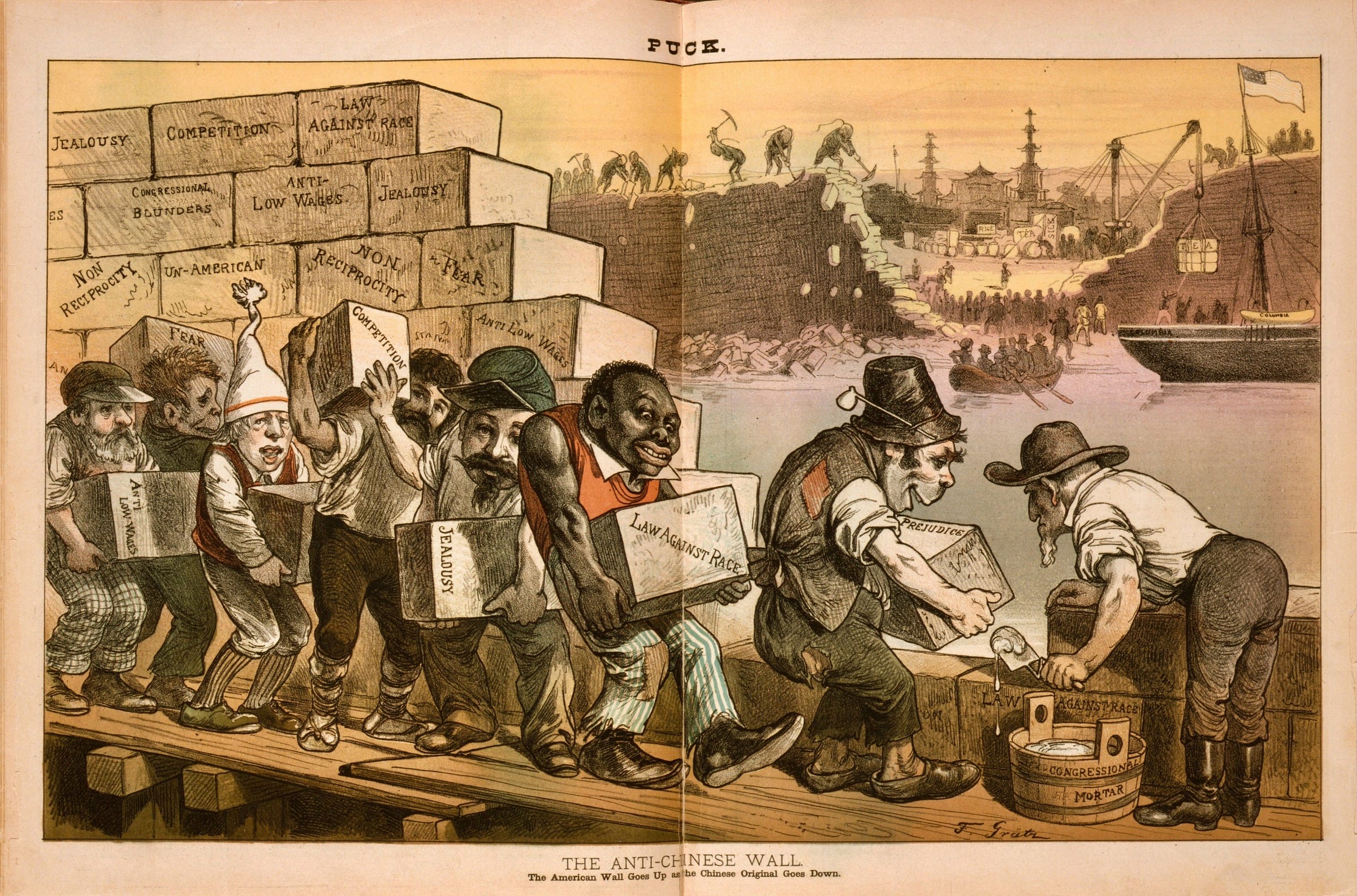Who needs evidence when you can create a moral panic?
The Trump administration is taking a page from an old playbook as part of their migration policy — one that has had deadly effect in the past
This article contains updated reporting from our November 2024 piece on how experts and media alike came to misunderstand and greatly exaggerate the power of the Tren de Aragua. If you haven’t read it and you’re interested in the facts about the ‘supergang’, you should. You can find it here.
Rings of hundreds of thousands of devil-worshipping cultists were hurting our children. A roleplaying game called Dungeons and Dragons was one of their recruiting tools — as was heavy metal rock music.
Parents formed vigilante groups that traded information on “signs of demonic infestation”. Entire grifter corporations formed that sold their services as “deprogrammers”, who could restore and heal those who had been brainwashed by diabolic magics. Police talked to national media on live television about investigations into blood rituals that involved cattle mutilation or even human sacrifice.
The U.S Department of Justice released official warnings about satanic cults abusing children sexually.
Between the 1970s and 80s, the United States was swept up in a moral panic that resulted in more than 12,000 groundless accusations of criminal activity — including child abuse — that often ruined the lives of those accused, such as teachers, private tutors, and even independent artists.
It was all bullshit of course. Perhaps the most dangerous aspect of moral panics — a widespread and irrational belief or fear that some group represents an existential threat to “good society” or a community’s values — is that they don’t require evidence. They can be started by sloppy reporting from media companies, false claims by politicians, and ill-intentioned actors seeking to profit from the demonization (in the case of the “Satanic Panic,” quite literally) of an “out group” in society.
If left unchecked, moral panics in the past have laid the groundwork for violent persecution, as in the case of “Witch Trials” in early U.S. history, or even eventually to genocides — as in the case of the holocaust in Nazi Germany.
A new dangerous moral panic over migration has been growing in the U.S. — encouraged by both political parties — for decades. The administration of President Donald Trump, however, has weaponized these fears via a seemingly never-ending series of false claims, accusations, and intentionally misleading policy statements.
U.S. President Donald Trump often speaks of “Witch hunts” when his party is accused of illegal or immoral activities, but under his administration, the U.S. has embarked on the largest organized witch hunt in modern history — at least since the “Second Red Scare” in the 1950s.
On March 15, the administration began shipping migrants to the notorious El Salvadoran prison CECOT. The flights have inspired a legal battle that is quickly becoming a challenge to ever-expanding powers that Trump has claimed for the executive branch.
As media companies and lawyers continue to reveal more information about some of the immigrants sent to the infamous El Salvadoran mega-prison CECOT, details continue to be revealed about flimsy evidence, a lack of due process, and even outright lies by ICE and DHS officials.
The deportation to CECOT of innocent Maryland man “shocks the conscience,” says Federal Judge

Kilmar Abrego Garcia — a Salvadoran migrant who lived in the U.S legally with a work permit — was deported by accident, according to admissions from the Trump administration itself.
“Through administrative error, Abrego-Garcia was removed from the United States to El Salvador,” ICE official Robert Cerna said in the court document. “This was an oversight, and the removal was carried out in good faith based on the existence of a final order of removal and Abrego-Garcia’s purported membership in MS-13.”
The same legal documents revealed that accusations Garcia formed part of the El Salvadoran gang were based, without evidence, on claims made by one ICE officer years ago after Garcia was detained for seeking work outside of a Home Center. The officer has since been fired. A judge dismissed the accusations as groundless a year later.
‘Satanic Marks’ were considered proof of guilt in another famous U.S moral panic two centuries ago
During the Salem Witch trials, prosecutors believed that those who made pacts with the devil would bear “satanic marks” as part of those pacts — such as odd birthmarks or even a “third nipple.”
Women were put to death for conditions ranging from temporary skin infections or even for simply possessing a “weird mole” in the words of one historian from the period.
Many of the accusations by ICE are no different. DHS and ICE officials claim innocent men have tattoos which they claim signify gang-affiliation. In the case of Andry José Hernández Romero, a Venezuelan barber with no criminal record who was removed from the U.S. despite having ongoing asylum processes, they refer to two tattoos on his wrist. His lawyers have pointed out that they bear the names of his mother and father.
Latin American experts who study the Tren de Aragua across the Americas have repeatedly pointed out that ‘the Tren’ does not use tattoos to identify its members.
Nonetheless,in 2024, under the Biden administration, DHS issued a communication purporting to guide law enforcement in the U.S. in identifying tattoos that show affiliation with the Tren de Aragua based on “open-source” evidence.
The guidelines are indeed “open-source”, so much so in fact that journalists have tracked down the original images on social media, most from years ago, and none are in any way related to the Tren de Aragua.
They originated instead from posts on Instagram and Facebook of a British influencer, the Pinterest page of a “Samurai tattoo” shop, a Puerto Rican reggaeton artist, a “nautical star” from a U.S. tattoo shop, and an AK-47 seemingly lifted from a Turkish tattoo artists’ social media page.
DHS criteria for identifying Tren de Aragua depends on a “point system” in which the weight of an ICE officer and seemingly any random tattoo is enough to send Latin American men to the “terrorism detainment complex” CECOT without ever seeing a judge — or in many cases even being informed of the decision until they are already on the plane.
Moral Panics are convenient for politicians and grifters alike
Central to the moral panic concept is an argument that public concern or fear over an alleged social problem is mutually beneficial to state officials — that is, politicians and law enforcement authorities — and the news media. The relationship between state officials and the media is symbiotic in that politicians and law enforcement need communication channels to distribute their rhetoric and the media need tantalizing news content to attract a wide audience which, in turn, attracts advertisers.
Moral panics arise when distorted mass media campaigns are used to create fear, reinforce stereotypes and exacerbate preexisting divisions in the world, often based on race, ethnicity and social class.
-2015 Paper on Moral Panics published by Psychology Today
Politicians in the U.S. have been encouraging this dynamic for decades, falsely claiming that, among other things, migrants are criminals. Migrants, in all of the Americas, commit crimes at a lower rate than natural-born citizens, especially violent crimes.
Migrants are a tempting scapegoat for politicians who don’t want to accept the blame for very homegrown problems with crime, the economy, or other social issues. Further facilitating the potential advantages of encouraging moral panic against immigrants is the fact that the vast majority cannot vote, thus false claims against them bring no potential negative election effects.
They are defenseless targets in an electoral sense, and often vulnerable communities in a social sense — both dynamics which make attacking them a “low-risk” proposition.
In the case of the Tren de Aragua specifically, politicians across the Americas have been eager to falsely blame migrants for high crime rates, or invoke the name of the ‘Tren’ to inspire fear among voters and build support for police crackdowns and anti-migration policies.
Irresponsible or sensationalist media companies have been eager to repeat these claims, often without bothering to check if they are true — reports repeated by other media companies until, eventually, a narrative of terror takes hold in the popular imagination. A legend begins to take on a life of its own.
The meteoric and unsubstantiated spread of ‘Tren’ infamy is facilitated by the inherent biases of even responsible media companies. Large media companies, as a whole, tend to over-rely on “official” sources like government officials, corporate think tanks, and retired “experts” who purport to speak for law enforcement but have been removed from the field for years if not decades. This bad reporting has been mistaken as consensus by even well-intentioned people covering the story in the U.S.
In a Venezuelan diaspora now 8 million strong, there are certainly members, or ex-members, among that population. There were likely also one or two Satanic cults in the U.S. between 1970 and 1985. In neither case, was a moral panic justified, and in neither case did authorities ever find hard evidence of any organized presence or systematic power.
But as we mentioned at the beginning of this piece, moral panics have never relied on evidence. This current attack on migrants is no exception.
Thanks for reading and supporting PWS! We are near our data limit on the size of our weekly feature, so will be forced to wait until next week to get back the “Big Headlines in LATAM” and the “Spanish Word of the Week.”
We decided to focus instead this week on producing the above long-read in a shift away from our normal newsletter.
But don’t worry! We’ll be back Sunday with the usual format, and hopefully a new “Ship’s Log” for paid subscribers in the meantime. Thank you as always for reading, and for the support.
Hasta pronto, piratas!








🫰🏻🫰🏻🫰🏻